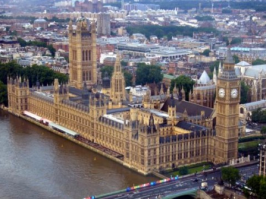Author Archive
1843: Steam- Powered rotary drum printing invented
Innovation: Steam-Powered rotary drum printing invented
Location: United States
Year: 1843
By: Richard March Hoe
Richard March Hoe grew up in a family who owned and operated a steam powered printing manufactory. By the age of fifteen, he began to work at his family’s printing manufactory and eventually when his father died in 1833, Richard Hoe became the head of the company. By this time in his career, Hoe realized that there must be some fundamental changes to the flat bed printing press to increase the speed of the job and he began working on a solution. More than a decade later in 1843, Hoe changed the printing game forever with his invention of the steam-powered rotary printing press. The type on this press was placed on a revolving cylinder that the paper ran under, greatly increasing the speed of the job. By 1847, Hoe patented his invention and it was first commercially used in the offices of the Philadelphia Public Ledger. With the rotary printing press, publications could now print at 8,000 pages an hour, revolutionizing the world of communication forever. There was a major increase in literature and information reaching the public, as it was now possible for publications to produce large daily editions. Hoe’s invention has been modified and improved over the years, but is still used as the foundation of the modern printing press.
1840: Temporary House of Commons – London, England
Innovation: First use of natural displacement ventilation system in England.
Location: Temporary House of Commons, London, England
Year: 1840
Ventilation System by: David Boswell Reid
The House of Parliament and House of Commons, together known as the Palace of Westminster, were destroyed by a fire in 1834. A Temporary House of Commons was built while the new Palace was in design and construction.
Reid was appointed to design the ventilation system of the Temporary House of Commons. “In the system employed in the Temporary House, which was actually in use for some fifteen years, air was drawn in from New Palace Yard (although Reid’s original design involved the use of a high turret), whence it passed into a basement plenum chamber, where it was heated or cooled. The air then passed through numerous apertures in the floor, upwards through the Chamber and eventually into a false ceiling connected to a downcast shaft. The vitiated air then became the combustion air for a furnace at the base of a chimney 120 ft (36 m) high (fig.3). This was probably the first instance of what we would now call ‘displacement ventilation’.”[2]
Articles related to this topic describe this system without mentioning the use of forced air. It is assumed that the system operated using natural breezes and displacement of air caused by changes in temperature along the path from air intake to exhaust [GB].
Reid was commissioned to design the ventilation system in the new, permanent Palace, but due to conflicts with the architect of the project, the ventilation system was not as successful as that of the Temporary House. `
1837: First Commercial Telegraph
Innovation: first commercial telegraph
Location: United States
Year: 1837
By: Samuel Morse
Sir William Cooke and Charles Wheatstone developed the first commercial electrical telegraph in 1837. It was used to relay messages over 13 miles in London, but had flaws such as not being able to support punctuation, capitalization, and a few letters in the alphabet. In the United States by 1837, with the use of electromagnets, a more efficient, cheaper, and further running telegraph was developed and patented by Samuel Morse and Alfred Vail. Over five years after the development of their electromechanical telegraph and Morse Code alphabetical system, Morse and Vail completed a telegraph line for the government that ran from Washington D.C. to Baltimore. By 1844, the line was complete and sending high speed messages from city to city. Two years later, The Magnetic Telegraph Company, formed by Morse, completed the first commercial telegraph line in America that ran from New York City to Washington D.C, launching a much quicker form of communication for the population. With the ability to communicate and relay ideas from city to city at such high speeds, the telegraph played an important role in the communication and technology eruption of the 19th century.
1837: Euston Station
Image Source: [1]
Innovation: Iron Truss roof
Location: Euston Train Station, London, England
Year: 1837
Designed By/ Civil Engineer: Charles Fox
London and Birmingham Railway originally opened Euston Station in 1837. Euston Station was Charles Fox’s first work and is believed to be the first example of an all iron truss roof. The span of the two roofs at the station combined to be an impressive 80 x 200 feet long. The roof structure was made of iron members that were forged and connected by drilling the ends of the bars and assembling with bolts. These iron bars were placed in tension and compression to securely hold the large span of the roof. This was a sign of approaching industrial engineering innovation. From the Euston Station architecture, a new field of design emerged that produced even wider spans and improved materials. This truss style of construction gained popularity, evolved to become more efficient, and is still used by engineers today. `







